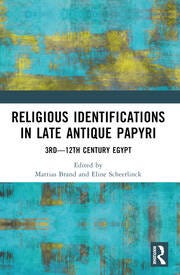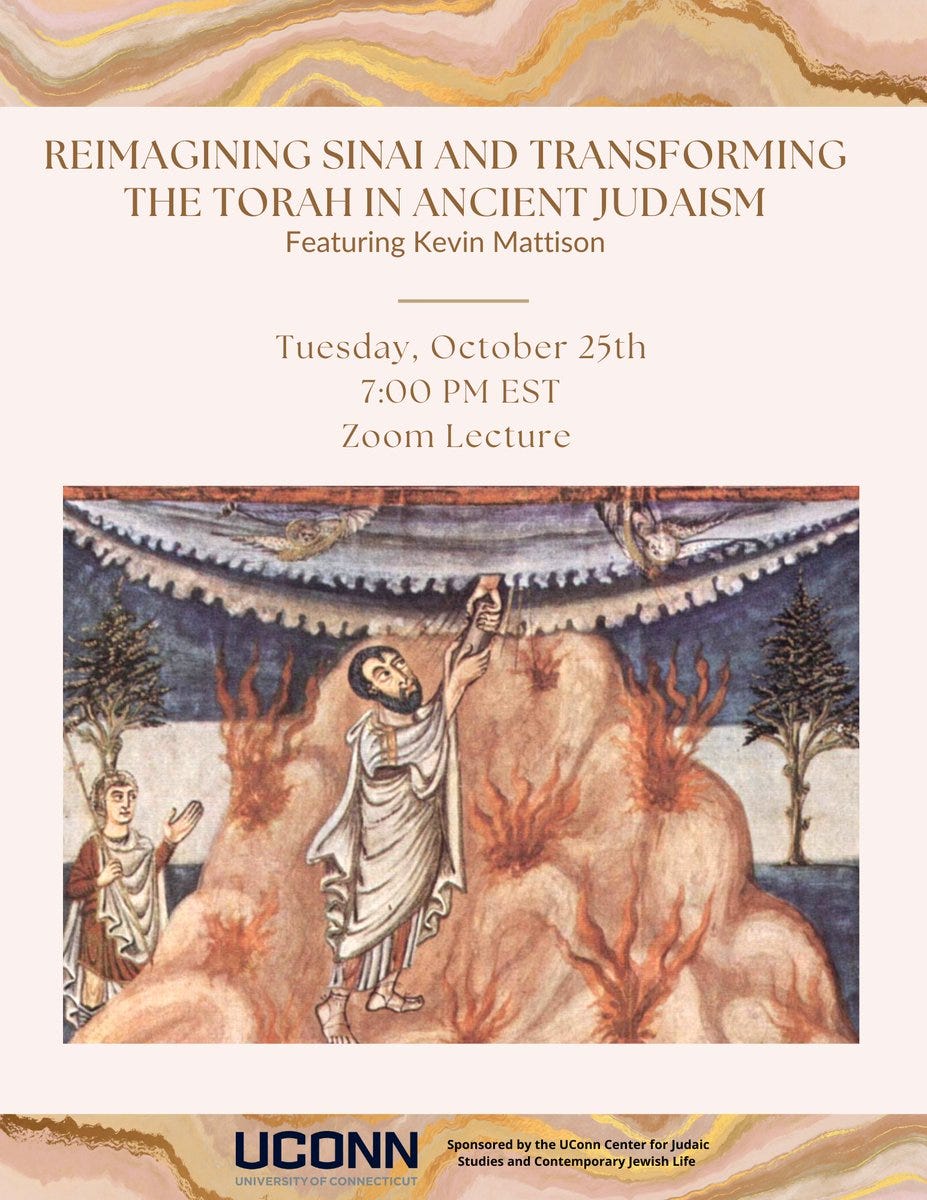Pasts Imperfect (10.20.22)
The Plague of Justinian, Jewish Tombstones in Roman Britain, Queering Euripides, and Much More

This week, Monica H. Green looks at new resources and publications for the study of the Plague of Justinian. Then, a Jewish tombstone in Roman Britain, queering Euripides, a new study of Maya teeth from ancient Belize, a new book on Eusebius of Caesarea, an open access monograph on late antique religious papyri, and much more.
On Learning How to Teach the Justinianic Plague
Monica H. Green, Independent Scholar (monica.h.green@gmail.com)
Nearly three years of living in a modern pandemic has raised questions about epidemic crises in the past, so much so that instructors not trained in History of Medicine are looking for ways to bring such questions into their classes. As a historian of medicine, I consider that a GOOD THING. In 2018 BC (Before COVID), I wrote a pedagogical guide on how to teach about the Black Death or (as it is better understood now) the Second Plague Pandemic in a way that could capture new perspectives on the pandemic coming in rapid succession from both the sciences and history. There’s a COVID edition of that now, and I’d refer readers to that for general background on the “genetics turn” in infectious disease history, since, as I explain there, the ability to understand the evolutionary history of humanity’s major infectious diseases has been transformational in expanding what can be said about which diseases afflicted populations in the past and, to some extent, why.
For instructors who teach the Classical and Late Antique periods, there has also been a boom in new scholarship and—just as importantly—new teaching resources on the Justinianic Plague, or First Plague Pandemic. Although usually said to have begun in 541 CE, when the first outbreak was reported at Pelusium on the Egyptian coast, it is likely that archeological and paleogenomics work will expand the narrative of the First Plague Pandemic both geographically and chronologically. Although other infectious diseases, both endemic and epidemic, affected ancient societies, the First Plague Pandemic has a special importance because it is now the best documented from written, archeological, and now genetic sources. An investment in developing pedagogical resources is well worth the effort, since available materials are only going to continue to accumulate. It is also an excellent topic to show the benefits of combining materialist and cultural approaches to study of the past, building on the strong archeological foundations that already distinguish the field of Classics. Finally, of special importance to Pasts Imperfect, it is an ideal topic through which to explore “global” questions, given its already documented geographic extent and the likelihood that it touched even more regions beyond the Mediterranean.
This short list includes resources that have most recently become available, all of which can be used to assemble a teaching portfolio. Most important to flag is a valuable new teaching resource from Harvard University, which makes available both a general narrative about the Justinianic Plague and a rich variety of primary sources, both in their original language and in translation. Valuable linguistic and historical commentary is provided, too. Importantly, this is an in-progress project, meaning that instructors can test-drive features and report back to the site designers. For example, already live is a mapping resource, a list of outbreaks recorded in written records, which allows a user to connect specific texts to the sites of outbreaks and to the basic scholarship that discusses them. The introduction lists other functionalities that are planned for the future.
Since we know more about the Second Plague Pandemic (13th-19th centuries) than the First, simply because of the greater abundance of records and archaeological work on the late medieval/early modern plague, instructors might want to consider incorporating some comparative work. The Harvard site has an extensive bibliography, but this can be supplemented by Roosen and Green, which is continually updated and captures new work on both pandemics, with the principal goal of allowing integration of scientific and humanistic approaches in a global framework. Keep an eye out for new work that moves beyond the Mediterranean littoral and engages with the African, Islamic, and Asian experiences with plague.
General Bibliography
Fancy, Nahyan. “Knowing the Signs of Disease: Plague in Arabic Medical Commentaries Between the First and Second Pandemics,” in Death and Disease in the Long Middle Ages, edited by Lori Jones and Nükhet Varlık (York: York Medieval Press, 2022), 35-66.
Green, Monica H. “On Learning How to Teach the Black Death: COVID Edition,” posted for free access on Academia.edu, 19 December 2021, https://www.academia.edu/65148743/Green_On_Learning_How_to_Teach_the_Black_Death_COVID_Edition_2021_
Green, Monica H. “A New Definition of the Black Death: Genetic Findings and Historical Interpretations,” De Medio Evo, Advance online, nº October: 1-19. https://doi.org/10.5209/dmae.83788.
Gruber, Henry, et al. The Justinianic Pandemic of Bubonic Plague (Yersinia pestis) 541-ca. 750 CE The Written, Archaeological, Geospatial and Genetic Evidence. Part I: The Written Evidence for the Justinianic Pandemic in western Eurasia and Africa. Beta Version Installment 1, https://tinyurl.com/firstpandemicsourcebook.
Little, Lester K. ed. Plague and the End of Antiquity: The Pandemic of 541-750 (Cambridge: Cambridge University Press, 2007). Written just as the potential of paleogenomics was coming into sight (see McCormick’s pioneering essay), this collection is still foundational to the field.
Roosen, Joris, and Monica H. Green. “The Mother of All Pandemics: The State of Black Death Research in the Era of COVID-19 – Bibliography,” 26 May 2020 (with subsequent updates), https://drive.google.com/file/d/1x0D_dwyAwp9xi9sMCW5UvpGfEVH5J2ZA/view?usp=sharing. This includes, as an extended appendix and bibliography on the First Plague Pandemic.
Sarris, Peter. “Viewpoint New Approaches to the ‘Plague of Justinian’, Past & Present, vol.254.1 (February 2022): 315–346, https://doi.org/10.1093/pastj/gtab024.
Stearns, Justin. “‘Amwās, plague of,” Encyclopedia of Islam, 3rd edition, ed. Kate Fleet, Gudrun Krämer, Denis Matringe, John Nawas, Everett Rowson (Leiden: Brill, 2016), vol. 2, 28-9.
Public Humanities and a Global Antiquity Online
Religious studies expert Meredith Warren has a new article in the Journal of Ancient Judaism on “Invisibility, Erasure, and a Jewish Tombstone in Roman Britain.” In it, she notes Rees’ maxim that the absence of evidence is not evidence of absence, looking to epigraphy to recover Jewish identity in the northern provinces: “An overlooked second-century tombstone, discovered in 1726 and currently housed in the University of Glasgow’s Hunterian Museum, could suggest a Jewish presence in Roman Britain.” And for those who would rather watch than read, Warren has now uploaded a video presentation of the article for all to use in courses or for their research:
Over at the Bloomsbury Academic Podcast, they speak to Sarah Olsen and Mario Telò about their new and novel edited volume: “Queer Euripides, the first volume to reconsider the entire corpus of an ancient canonical author through the lens of queerness broadly conceived.” Part one of the podcast looks at what is known about Euripides and how they apply a queer lens. They then look at “the process of selecting contributors for this volume.” Part two drills the editors about what ancient dramas they would see if they lived in the ancient Mediterranean and which they’d take to a desert island.


Archaeologist, bioanthropologist, and science communicator Kristina Killgrove is now a contributor for Live Science. Check out her newest piece, on a newly published study of Belize's Midnight Terror Cave during the Maya Classic period (250-925 CE) and the thousands of remains discovered within it.
To dive deeper into the victims' final moments, the latest research didn't look at bones but instead at their mouths, investigating the calcified plaque from their teeth, known as dental calculus. The study, published Sept. 20 in the International Journal of Osteoarchaeology, describes curious blue fibers clinging to the teeth of at least two of the victims.
![Maya blue pigment deposit, Midnight Terror Cave. Photograph by Melanie Saldaña [Colour figure can be viewed at Chan, Brady, Cummings 2022]. Maya blue pigment deposit, Midnight Terror Cave. Photograph by Melanie Saldaña [Colour figure can be viewed at Chan, Brady, Cummings 2022].](https://substackcdn.com/image/fetch/$s_!0xEm!,w_1456,c_limit,f_auto,q_auto:good,fl_progressive:steep/https%3A%2F%2Fbucketeer-e05bbc84-baa3-437e-9518-adb32be77984.s3.amazonaws.com%2Fpublic%2Fimages%2Fe368abf3-0fa5-4de4-b344-855dc6f06452_1128x818.png)
A new, open access book, Religious Identifications in Late Antique Papyri: 3rd-12th century Egypt, focuses on the late antique and medieval religious identities of Christians, “pagans,” Jews, Manichaeans, followers of Islam, and many others, as understood through the evidence of papyri written in Coptic, Greek, Hebrew, Aramaic, and Arabic. A big thanks to Mattias Brand for pushing to make this volume OA. When authors push for open content, we all benefit.
Over at her The Daily Beast column, Candida Moss discusses a new and remarkable book by Jeremiah Coogan on the “fifth evangelist,” Eusebius of Caesarea.
“A fifth evangelist?!” you say, and rightly so. This fifth portrait is that of Eusebius of Caesarea, the man who taught us how to read the Gospels. A new book, Eusebius the Evangelist: Rewriting the Fourfold Gospel in Late Antiquity, by Dr. Jeremiah Coogan, an assistant professor of New Testament at the Jesuit School of Theology at Santa Clara University, sheds light on history’s lost “fifth evangelist” and explains the pervasive influence of the bishop who has, arguably, done more than anyone else to shape how we read the gospels.

And finally, for Halloween reading: why not revisit Moudhy Al-Rashid’s essay for the London Review of Books on Irving Finkel’s The First Ghosts. Note some of the ghost-busting suggestions from ancient Mesopotamia, where ghosts were extremely thirsty:
Another ritual calls for three libations of donkey urine; Finkel explains that ‘the thirsty ghost – for ghosts were always thirsty – might take it for a refreshing beer and receive a punitive shock.
Lectures, Conferences, and CFP for a Global Antiquity
On Tuesday, October 25, 2022 at 7:00 pm EST, Kevin Mattison will be speaking on “Reimagining Sinai and Transforming the Torah in Ancient Judaism.” The lecture is completely online and free to attend. Register here.
New Antiquity Journal Issues (by @YaleClassicsLib)
Early China Vol. 45 (2022) Festschrift in Honor of Michael Loewe on his 100th Birthday
Jerusalem Journal of Archaeology Vol. 3, No. 1 (2022) #openaccess Natural Caves and Underground Artificial Features
Journal of Medieval Monastic Studies Vol. 11 (2022) NB: Edel Bhreathnach, “Skellig Michael, Co. Kerry: A Lonely Island Hermitage at the Edge of the World?”
Chronique d'Egypte Vol. 96, No. 192 (2022)
Byzantinische Zeitschrift Vol. 115, No. 3 (2022)
Oxford Journal of Archaeology Vol 41, No 4 (2022) NB: Meredith Laing, “Young Hands at Work: Using Finger Impressions to Explore the Demographic Constitution of Early and Middle Bronze Age Communities of Practice”
Early Science and Medicine Vol. 27, No. 4 (2022) NB: Isabella Bonati, “Hydrocephalus in Context: A History from Graeco-Roman Sources”
Syllogos: Herodotus Journal Vol. 1 (2022) New #openaccess journal
Antiquity Vol. 96, No. 389 (2022)
Speculum Vol. 97, No. 4 (2022)
Vigiliae Christianae Vol. 76, No. 4 (2022)
Pallas No. 113 (2020) #openaccess I fluidi corporei nella medicina e nella veterinaria latine.
Studia Historica: Historia Antigua Vol. 40 (2022) #openaccess
Polygraphia No. 4 (2022) #openaccess
Journal of the History of Philosophy Vol. 60, No. 4 (2022)








